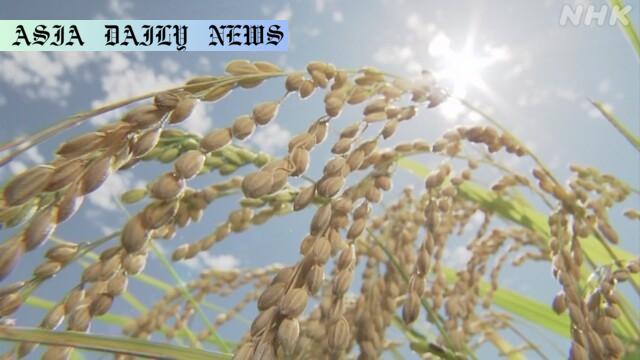Rice production is expected to soar due to high prices, with Japan’s agriculture ministry projecting a record harvest increase.
- Japan’s rice harvest in 2025 is projected at 7.35 million tons, a 560,000-ton increase.
- Higher rice prices have motivated farmers to dedicate more land for human consumption.
- Animal feed rice saw a significant acreage drop to prioritize table rice.
- The 2025 rice production represents the highest year-on-year growth since 2004.

Record-Breaking Increase in Japan’s Rice Production
Japan’s agricultural sector is poised for a remarkable surge in rice production in 2025. According to the nation’s Ministry of Agriculture, this upswing is attributed to favorable market conditions, including notably high rice prices, which have encouraged farmers to shift their focus toward cultivating table rice for human consumption. With an expected 7.35 million tons of rice to be harvested—an increase of 560,000 tons compared to the previous year—this marks the highest year-on-year growth recorded since 2004, when the ministry initiated its rice production survey. Farmers have responded positively, shifting approximately 100,000 additional hectares to rice cultivation compared to 2024.
Shift in Land Use Signals Focusing on Human Consumption
One of the major adjustments contributing to this growth is the redirection of agricultural resources from animal feed rice production to table rice. Approximately half of the acreage initially allocated to animal feed rice has been reassigned, reflecting a focused strategy to meet growing consumer demand for table rice. Despite Japan’s aging farming workforce, higher rice prices have become a strong motivator, enabling the sector to thrive despite structural challenges. Noteworthy among these trends is the stability in total rice acreage, which has remained at around 1.52 million hectares, underscoring the strategic deployment of arable land for optimal yield.
Economic Implications and Market Response
The projected increase in rice production holds significant economic implications for Japan’s agricultural industry. Rising profits from higher table-rice prices may lead to reinvestments in farming technologies, helping to modernize the sector and attract a younger generation to offset the labor shortages. For consumers, increased supply could stabilize rice prices, alleviating some pressures from rising food costs. Furthermore, the milestone underscores the government’s ability to adapt to market dynamics, effectively guiding farmers to keep rice production resilient and responsive to economic opportunities.
Looking Ahead
As the ministry finalizes the outlook for 2025, the anticipated record growth underscores the importance of strategic planning in Japan’s agricultural sector. Policymakers are expected to focus on sustaining this growth through incentives that support farming communities while ensuring environmental sustainability. Beyond 2025, the emphasis on technological advancement, efficient irrigation methods, and climate adaptability will likely dictate the trajectory of the country’s rice production.



Commentary
Encouraging Trends in Agriculture
There is something profoundly inspiring about the resilience of Japan’s agricultural sector, as illustrated by its projected rice production boom in 2025. The surge of 560,000 tons is a testament to the adaptability of the country’s farming community. While challenges such as an aging workforce persist, the ability of these farmers to pivot their focus to meet market demands reflects extraordinary foresight and dedication. Higher table rice prices have clearly incentivized this shift, underscoring the role of economic variables in steering agricultural practices.
Balancing Growth and Sustainability
The growing focus on land reallocation—from animal feed to table rice production—is a reminder of the finite resources available to meet growing human needs. While this redirection of resources addresses immediate demand, it raises questions about long-term sustainability. How will Japan balance the dietary needs of its population with the environmental toll of increased rice cultivation? Policymakers must seize this moment to implement eco-friendly farming practices and support research into alternative rice varieties to ensure that future production remains sustainable.
A Look at the Global Implications
Japan’s anticipated rice boom also holds lessons for the global agricultural community. The industry’s ability to adjust to high demand and price volatility demonstrates a level of agility that could serve as a model for other rice-producing nations. As the world grapples with food shortages in certain regions, the Japanese experience suggests that economic incentives can indeed drive meaningful changes in production strategies. However, these strategies must be complemented by investments in agricultural research, infrastructure, and education to ensure sustained success.